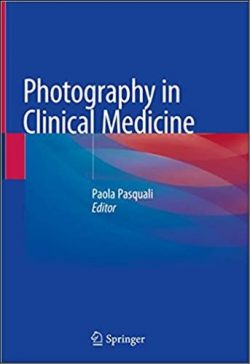Diagnosis and management of pigmentary skin disorders has become an important area in dermatology as the demand for treatment of these conditions has increased exponentially, particularly with skin of color. However, coverage in standard texts regarding various pigmentary disorders is insufficient and the need for focused attention on new developments and latest research findings is growing.
Pigmentary Skin Disorders is written and edited by international leaders in the field and chapters include a clinician’s approach to categorizing pigmentary disorders, post-inflammatory hyperpigmentation, lasers in pigmentary disorders, and drug-induced pigmentation. This volume is part of Springer’s Updates in Clinical Dermatology series which aims to promote the rapid and efficient transfer of medical research into clinical practice. Covering new developments and innovations in all fields of clinical dermatology, it provides the clinician with a review and summary of recent research and its implications for clinical practice. Each volume is focused on a clinically relevant topic and explains how research results impact diagnostics, treatment options and procedures, as well as patient management. The reader-friendly volumes are highly structured with core messages, summaries, tables, diagrams and illustrations and are written by internationally well-known experts in the field.
Sanjeev V. Mulekar
“Pigmentary Skin Disorders is an essential addition to the bookshelves of dermatologists, dermatology trainees and clinical researchers and also provides a valuable resource for general practitioners. It will help to bring greater understanding to this important and often neglected area of dermatology, especially in Australia where clinical practice is changing due to shifts in the ethnic mix of the population.” (Adrian Mar, Australasian Journal of Dermatology, December, 2018)
Prasad Kumarasinghe, MBBS,MD,FCCP,FAMS,FACD is a Clinical Professor and Consultant Dermatologist at the University of Western Australia, Department of Dermatology, and is affiliated with Fiona Stanley Hospital. He is also a Fellow of the Australian College of Dermatologists (FACD), a Fellow of the Singapore Academy of Medicine (FAMS), a Fellow of the Sri Lanka College of Dermatologists (FSLCD) and a Fellow of the Ceylon College of Physicians (FCCP). He worked as a Consultant Dermatologist at several university teaching hospitals in Sri Lanka and Singapore before commencing practice in Australia. Dr Kumarasinghe is a leading authority on pigmentary disorders and tropical dermatology and is a regular speaker at many national and international dermatology forums including the World Congress of Dermatology, International Congress of Dermatology and the International Pigment Cell Conference. He has authored or co-authored over 90 scientific papers in reputed medical journals and written chapters in several internationally recognised dermatology textbooks.
Diagnosis and management of pigmentary skin disorders has become an important area in dermatology as the demand for treatment of these conditions has increased exponentially, particularly with skin of color. However, coverage in standard texts regarding various pigmentary disorders is insufficient and the need for focused attention on new developments and latest research findings is growing. Pigmentary Skin Disorders is written and edited by international leaders in the field and chapters include a practical clinical classification of pigmentary disorders, recent advances in vitiligo, current views on melasma, postinflammatory hyperpigmentation, lasers in pigmentary disorders, and drug-induced pigmentation. This volume is part of Springer’s Updates in Clinical Dermatology series which aims to promote the rapid and efficient transfer of medical research into clinical practice. Covering new developments and innovations in all fields of clinical dermatology, it provides the clinician with a review and summary of recent research and its implications for clinical practice. Each volume is focused on a clinically relevant topic and explains how research results impact diagnostics, treatment options and procedures, as well as patient management. The reader-friendly volumes are highly structured with core messages, summaries, tables, diagrams and illustrations and are written by internationally well-known experts in the field.





